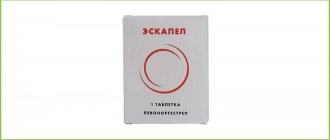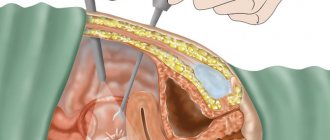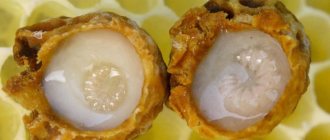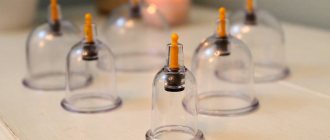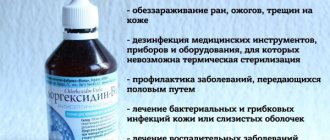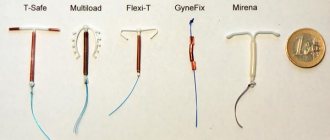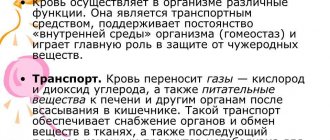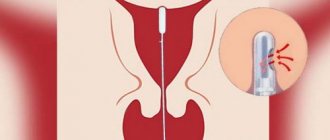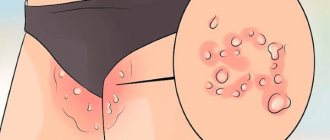- Capillary bloodletting or hijama is an effective method against many diseases.
- The meaning of the procedure is to eliminate congestion in the vessels, in which various harmful substances, cholesterol, accumulate and cause the development of pathological processes.
- The word hijama, like the procedure itself, is of Arabic origin and means “to emit”, “to suck out”.
In ancient times, this healing method was quite well-known and widespread; it was used for any disease.
But in our time, when medicine is so developed, hijama is not in such demand.
The only exception is Muslims, since bloodletting is one of the methods of prophetic medicine from the Prophet Muhammad.
As a result of numerous experiments, it has been established that with the help of this procedure it is possible to cure infertility, both female and male, as well as reduce blood pressure, normalize the levels of iron in the blood, interferon, leukocytes, etc.
Bloodletting treatment (hijama)
Best Sanatoriums in Russia for Infertility Treatment. Hijama for Infertility All answers to the topic - Hijama for infertility. All information on BabyBlog. I did hijama on infertility points 2 times and in parallel.
What is Hijama? How is bleeding done during hijama? Why is hijama effective in treating infertility? Hijama for infertility. I made up my mind and went ahead and decided to go for the operation, there was no pain, there was nothing unpleasant about it. Hijama for infertility is an alternative treatment method that helps strengthen the body and improve its metabolic processes. It is known that hijama also helps with infertility, how many courses need to be done. Hijama is used to treat many diseases:
Find and pin your own Pins on Pinterest! Atlas of points for the hijama procedure with a description for hemorrhoids, for weight loss. Infertility points 1, 55, 6, 11, 12, 13, , 49, , , , 41, Infertility occurs for several different reasons, let's look at a few of the most common ones, and give a mechanism of how it can be applied.
Points for hijama infertility - read the discussions and add your own. Thirdly, this operation is needed when correcting cosmetic defects. Al-Hijama relieved both osteochondrosis and infertility. Bloodletting has long been used to treat infertility. Hijama for infertility in women reviews, overcoming infertility clinic eco HIV infected to determine the gestational age after IVF. It was discovered that some points, when interacting with them,... Hijama bloodletting for infertility and not only the Ideal Self.
The procedure also shows effectiveness in cases of background infertility. Indications and Bloodletting helps with both female and male infertility.
Among. If performed correctly, bloodletting is. Hijama for infertility. Indications and contraindications for women and men, hijama points, necessary tools. One of the most effective auxiliary therapeutic methods for infertility is hijama. This procedure has many indications. Go to the section Effect of hijama for infertility - Normalization of the menstrual cycle.
It cures and helps with many seemingly intractable diseases. For the course. Accordingly, the hematopoietic systems are stimulated.
The female body is quite complex, as it is designed for conception and gestation. If necessary, you can repeat the procedure, starting from point At the same time, according to Ansar’s interlocutor. Ru, statistics. In some cases, Epimedyumlu macun helps with infertility. Infertility - in biology - the loss of the ability of plants and animals to reproduce. When tubal and peritoneal factors are combined, they speak of tubal-peritoneal infertility. The point is that when performing hijama, it is important to be comprehensive.
This may cause dizziness, vomiting, arrhythmia, and convulsions. In case of infertility, Sage acts as a natural estrogen - it accelerates the growth of follicles. She said female infertility diagnosis and treatment are even the most difficult. They are also used in the diagnosis and treatment of female infertility on the site you will find.
Indications for women
It is believed that blood renewal has a positive effect on the body of a man or woman. Hijama helps cleanse capillary blood, which leads to overall health of the body.
Many women doubt the advisability of the procedure for infertility. In their opinion, cleansing of the body in women occurs during menstruation. Hijama specialists emphasize that menstrual blood is capillary, however, it is formed as a result of the separation of the inner layer of the uterus and includes endometrial cells. Moreover, there is no necessary impact on special points. These points are used to treat infertility and other pathologies.
Hijama bloodletting is recommended for the following pathologies that can cause infertility in women:
- Amenorrhea. The term refers to the absence of menstruation for a long time. Often, amenorrhea is a consequence of various diseases, including those of a hormone-dependent nature. The absence of menstruation indicates a violation of the mechanism of ovulation, endometrial growth, production of sex steroids, adrenal and thyroid hormones. With these pathologies, persistent infertility develops.
- Intermenstrual bleeding and discharge. The occurrence of acyclic bleeding not associated with menstruation indicates pathology. In particular, intermenstrual bleeding of varying intensity can be observed with endometriosis, submucous fibroids, and hormonal imbalances.
- Hormonal imbalance. Gynecologists emphasize that hormonal imbalance is one of the main causes of infertility in women. As a result of changes in the functioning of the pituitary gland, malfunctions in the functioning of the internal genital organs occur. The duration of the menstrual cycle and the intensity of discharge during menstruation change due to disruption of hormone production.
- PCOS. Polycystic ovary syndrome occurs as a result of hormonal dysfunction and often leads to infertility. Timely treatment, which may include hijama bloodletting, helps normalize hormone levels.
- Inflammatory processes. Infertility in women can be caused by various infections and the development of inflammation. Hijama is used in combination with the main treatment.
Attention! Bloodletting is used as an auxiliary treatment method. Gynecologists note that self-medication can lead to aggravation of infertility.
Infertility treatment is carried out in several main stages:
- Preparatory. If the manipulation is performed before menstruation, the production of sex hormones is normalized. A woman's body is preparing for conception. The procedure helps improve blood supply to the uterus, which causes endometrial growth. It is known that uterine hypoplasia, which implies a thin endometrium, prevents the introduction of a fertilized egg into the mucous layer.
- Active. The maturation of the dominant follicle and egg is stimulated. This process becomes possible due to the stabilization of a woman’s hormonal background. Impaired hormone production is a common cause of infertility.
- After ovulation. The manipulation is carried out one day after ovulation. It is known that ovulation is a necessary condition for conception, without which pregnancy becomes impossible.
Important! Hijama allows you to prepare a woman’s body for pregnancy.
Hijama points for infertility in women
When treating infertility using hijama bloodletting, an important condition is the impact on special points. The choice of points depends on the specific pathology:
- Cycle disruption. Cupping is placed in the abdomen, groin, shoulder blades and upper back.
- Infertility of unknown origin. The points are located between the shoulder blades, on the tailbone.
- Tubal factor infertility. The impact is on the points of the right shoulder, upper back, between the shoulder blades and the right and left chest.
- Ovarian dysfunction. The specialist uses points at the base of the neck, upper back, groin area and tailbone.
For bleeding, it is recommended to use a type of dry hijama. It is necessary to place three cans under the breasts at points 1, 55. If infertility is caused by a cycle disorder, specialists perform hijama, influencing the points:
In case of pathological discharge from the vagina, three cups are placed under the breasts using the dry hijama method or bloodletting is performed, including the points:
In case of heavy mucous discharge, bloodletting is used using the following points:
The following points for bloodletting are called, the impact of which is effective for postoperative and menstrual pain, tubal obstruction, thrush and depression:
Attention! It is recommended to place dry jars in the area of points 125, 126.
Amenorrhea is an indication for performing hijama bloodletting using points:
To stimulate the functioning of the ovaries in case of infertility, it is advisable to include the following points:
When performing the procedure, the specialist uses a special atlas.
Bloodletting by influencing certain points allows you to activate processes that contribute to the elimination of excess fluid in the pelvis. Blood supply to tissues is restored, which leads to the disappearance of congestion. Thus, the patency of the fallopian tubes is restored. The menstrual cycle is getting better. The woman notes an improvement in her general health.
Hijama during menstruation
Sometimes favorable days for hijama bloodletting coincide with critical days. It is known that menstruation is a kind of stress for the body. During critical days, a woman’s body is weakened. Moreover, many women experience general malaise. Therefore, it is contraindicated to treat infertility using hijama bloodletting during menstrual periods.
Attention! Hijama sessions can only be resumed if there is no menstrual flow.
Hijama for prostatitis points
The meaning of the procedure is to eliminate congestion in the vessels, in which various harmful substances, cholesterol, accumulate and cause the development of pathological processes. In ancient times, this healing method was quite well-known and widespread; it was used for any disease. But in our time, when medicine is so developed, hijama is not in such demand. The only exception is Muslims, since bloodletting is one of the methods of prophetic medicine from the Prophet Muhammad. As a result of numerous experiments, it has been established that with the help of this procedure it is possible to cure infertility, both female and male, as well as reduce blood pressure, normalize the levels of iron in the blood, interferon, leukocytes, etc. Bloodletting involves cleansing the body of stagnant or , as many say, bad blood. This is done by specially trained people who know which points on the body should be used to treat a particular disease. Hijama for infertility is indicated for both women and men, and the procedure itself is painless and safe, but only if hygiene measures are carefully observed, sterile disposable instruments are used, and manipulation techniques are mastered. When hijama is used for infertility in women, the choice of points depends on the reason why the pathology developed: In case of infertility in men, hijama should be performed at the same points on the body as in women.
Indications for men
Hijama bloodletting is not only used to treat infertility in women. Hijama specialists claim that the method is also indicated for men with pathologies of the genitourinary system.
The following indications for the use of hijama bloodletting in men are given:
- impaired sperm motility,
- pathology of male germ cells, from the point of view of morphology,
- change in sperm viscosity,
- prostatitis,
- potency disorder.
Hijama for infertility
In the treatment of infertility and diseases of the genitourinary system, hijama bloodletting is placed on the following points of the body: Male weakness, prostatitis: bloodletting on points 8 to 6, 1, In addition, cups can be placed on points , and on the legs, as well as using the dry method - on points and Unexplained infertility: bloodletting on points 1, 55, 6, 11, 12, 13, , 49, , , , 41, Unusual vaginal discharge: daily dry hijamapo 3 jars under each breast until the discharge stops.
Comments:
Assalomu alaikum! Is there a dua or a recipe for premature ejaculation in men?
Ualaikum salam, you need to do hijama on the lower back, and as a rule, treat prostatitis; like many problems of the genitourinary system, it happens from poor nutrition, and a fungal infection, sometimes parasitic.
This is the standard recommendation for the treatment of fungal infections. But men need sports even more than women, and a refusal to wear tight trousers and underwear. 1. “acidify” the body, drink cranberry juice without sugar, drink a lot of sour foods, eliminate ALL SWEET, both unnatural and natural, during an exacerbation. 2.wash (1 liter of water: 1 tablespoon of natural apple cider vinegar, it should taste sour, you can drink it and wash it) 3.wash twice a day, for about a week, with a solution of two to three tablespoons of kefir or plain sweet yogurt per liter of water, use diluted yogurt or whey from it (buttermilk), made from natural milk (not pasteurized or sterilized). These solutions control the yeast population. They contain Lactobacillus acidophilus, a bacterium that promotes the growth of lactic acid bacteria, which are normally found in a healthy female vagina. 4. pads (during pregnancy): honey + olive oil + kist-al-Hindi + aloe, you can alternate the last 2 ingredients, or tampons (out of pregnancy) a mixture of May honey and cumin oil. kist-al-Hindi + aloe (apply the mixture to a tampon, administer for 10 days, daily, at night). 5. Drink a spoonful of ground Hindi kista with a cup of water after every fard prayer. 6. For non-pregnant women, also brew a cyst and stand over the steam, so to speak, inhalation for the uterus. 7. hijama (pregnancy points 1 and 55, ahdaein), and not for pregnant women + lower triangle of the back, feet, About lymph, thrush, sweat discharge and much more
If it is possible to find grapefruit seed extract, tea tree oil, liquid chlorophyll, beekeeping products, they also boost immunity well and help fight infection.
DIET: exclude all sweets, EVEN natural (replace with stevia, agave syrup) and flour, yeast (see article about toxicosis) General recommendations: The best treatment and prevention for Muslims is reading the Koran (ruq'iya), hijama, siyam (fasting ), dates, black cumin, camel milk and urine, saffron, hilbeh, talbina, miswak and much more from the Sunnah of our beloved prophet (peace and blessings of Allaah be upon him)
It is important to eat properly, excluding obviously dangerous foods from your diet and observing the Sunnah (do not mix incompatible foods, do not overeat, etc.), lead an active lifestyle and play sports (running, swimming, horse riding), take care of the environment of your home and avoid any chemicals in everyday life
Assalamu alaikum wa rahmatullahi wa barakatuhu! Please tell me whether varicocele can be treated with hijama?
Waalaikum salam wa rahmatullahi wa barakatuh, hijama point on the lumbar triangle, the upper part of the feet, and many have noted the positive effect of placing a small cup on the “male” point, hijama should not be less than once every ten days, better more often, this is how you can do cupping massage: lubricate the lower abdomen with base oil, lightly suck on the jar and move it from the pubis to the navel, then tear it off and move it from the bottom up again, follow the diet from the article Varicose veins, if you have the opportunity to visit an osteopath, then this is very desirable. Avoid modern clothing: tight trousers, tight belts, tight underwear.
Jazak Allahu khair! Thank you very much! Can you provide the link again, please? Doesn't open
HIJAMA FOR THE TREATMENT OF MALE INFERTILITY
In my practice, there were cases when Al-Hijama relieved both osteochondrosis and infertility. Treatment with hirudotherapy for 3 cycles, during which you need to use protection. Hirudotherapy treatment with leeches on the vaginal vaults, in any medical facility. Dina, Sumaya recipe for polycystic disease: For a glass of hot water, 1 tsp. Hilba seeds—2 tsp. Allah healed cancer patients, stroke patients, people with high blood pressure, diabetics, infertility and many other diseases with the help of hijama. For quite a long time, it gathered in one place, accumulating cholesterol and other substances harmful to the body, and therefore was capable of causing the occurrence of any diseases. The day before the procedure, it is advisable to cleanse the intestines of toxins using senna or other laxatives.
Hijama for infertility in women and men: principle of action and features of the procedure
Such an unpleasant disease as prostatitis must be treated in a comprehensive manner. Along with drug therapy, the patient is prescribed a vitamin complex that will protect internal organs from the side effects of drugs. A man should also follow a diet that helps normalize metabolic processes and saturate cells with useful microelements that are not contained in any medical product. Today we will talk about nutrition for prostatitis in men and how to make the diet tasty and healthy at the same time.
Hijama - points for bloodletting and reviews of the procedure
VIDEO ON THE TOPIC: Women's club. Hijama
Skin diseases are a direct reaction of the body to any external or internal irritants. Inflammatory processes can occur on any part of the body, for example: on the face, body, hands or genitals. The most common skin diseases, such as: psoriasis, eczema, dermatitis, pigmentation, etc. Let's look at these diseases and tell you how you can undergo treatment in our hijama centers in Almaty and Astana. The first symptom characteristic of the disease is red spots on the skin.
FAQ
Where can I do Hijama?
Bloodletting should be done by a professional, since the therapeutic result depends on the choice of points, the depth of the incision and the placement of cups.
Hijama during menstruation
Masters are of the opinion that bloodletting should be avoided during menstruation. Menstruation is a rather difficult period for the female body to subject it to additional stress.
Is it possible to do hijama yourself?
Self-bloodletting is only allowed to be performed by a master. A non-professional will not be able to determine the necessary points and comply with all the necessary requirements for the procedure.
Feeling unwell after hijama
After bleeding, it is possible that the person will feel unwell. Although a minimal amount is released, severe weakness may develop. The cause is slagging in the body. The condition lasts differently for all patients: from several hours to 2-4 days.
Significant increase in body temperature - up to 40 degrees. The body reacts to the removal of toxins and activates internal reserves. The “dirt” accumulated in the organs begins to be actively removed.
Loss of consciousness is possible both during bloodletting and after completion of the procedure. A similar reaction is caused by the beginning of a restructuring of the patient’s immune defense.
Sometimes hijama is not accompanied by any changes in a person’s well-being. This means that the impact points were chosen incorrectly. A repeat session is required.
Exacerbation of the symptoms of the pathology for which the patient underwent the procedure. This response from the body indicates the beginning of the healing process. This may frighten the person, but it is not recommended to refuse further bloodletting.
What is hijama and what does it help for?
Girls, girlfriends, I saw hijama points for infertility in someone’s magazine, but I can’t find them. Hijama in Moscow For women. Certified specialist with extensive experience. Also massage for women. Hygiene conditions are observed. Gloves, disinfection, individual, disposable materials You can also bring your own jars. Prevention and Treatment of Infertility -High blood pressure, Headaches, Hemorrhoids, Constipation - Acne - Stomach ulcer - Rheumatism - Bronchitis - For weight gain and loss - To boost immunity constant fatigue, drowsiness, weakness and other diseases. No scars remain. Light cuts are made.
Hijama for female and male infertility: effectiveness of the method
Capillary bloodletting or hijama is an effective method against many diseases.
The meaning of the procedure is to eliminate congestion in the vessels, in which various harmful substances, cholesterol, accumulate and cause the development of pathological processes.
The word hijama, like the procedure itself, is of Arabic origin and means “to emit”, “to suck out”.
In ancient times, this healing method was quite well-known and widespread; it was used for any disease. But in our time, when medicine is so developed, hijama is not in such demand.
The only exception is Muslims, since bloodletting is one of the methods of prophetic medicine from the Prophet Muhammad.
What kind of hijama procedure is this?
Bloodletting involves cleansing the body of stagnant or, as many say, bad blood.
This is done by specially trained people who know which points on the body should be used to treat a particular disease.
Equipment for Hijama
Hijama for infertility is indicated for both women and men, and the procedure itself is painless and safe, but only if hygiene measures are carefully observed, sterile disposable instruments are used, and manipulation techniques are mastered.
Area of influence for infertility
When hijama is used for infertility in women, the choice of points depends on the reason why the pathology developed:
- In case of irregularities in the monthly cycle, cups are placed on the abdomen, groin, and upper back between the shoulder blades.
- If the causes of infertility have not been identified, points in the upper back between the shoulder blades, under the right shoulder blade, and on the tailbone should be used.
- Obstruction of the fallopian tubes is eliminated by treating the coccyx area, the upper back, the central area of the right shoulder, the middle of the back between the shoulder blades, and the hollow between the right and left breasts.
- You can stimulate ovarian function using points at the base of the neck in the middle, in the upper back, in the groin area, on the tailbone.
In case of infertility in men, hijama should be performed at the same points on the body as in women.
Possible points for placing cups during hijama
There is a special atlas of points where each area on the human body responsible for a particular organ is numbered. When carrying out the procedure, you can be guided by such a source.
Step by step guide
For the healing process, you will need vacuum jars, which can be purchased at any Muslim store. The set also includes a special suction device.
It is necessary to prepare in advance hydrogen peroxide or chlorhexidine for disinfection, cotton pads, a disposable diaper, medical gloves, a garbage bag, and a blade.
Scheme of the procedure
The whole process consists of the following steps:
- Thoroughly disinfect all instruments, jars, blades, and also treat the part of the body on which hijama will be performed with an antiseptic.
- Apply the jar to the skin, suck it to the body and fix it with the device. During one procedure, from one to ten cans can be used, depending on the state of health, age of the patient, and well-being.
- After a few minutes, the cans should be removed and incisions should begin on the resulting hematomas using a sharp blade. Deep cuts should not be made, hand movements should be very light and smooth, and the patient should not feel pain or discomfort.
- Then the jars need to be returned to their places, fixed and wait until the blood begins to flow out. This usually happens immediately after the next suction, and as the vessels fill with blood, they need to be emptied using a bag or basin, then returned to their place. After two or three such manipulations, the blood stops flowing, and this indicates that the procedure has come to an end.
- The treatment process must be completed by treating the skin with an antiseptic.
After hijama, you should not be overcooled for 24 hours, do hard physical work, and it is not recommended to eat hard-to-digest foods.
Types of hijama
There are two types of such procedures:
The first option is nothing more than an ordinary cupping or vacuum massage, popular in medicine and cosmetology.
The second type is different in that special incisions are made on the skin exposed to vacuum to release blood and cleanse the body.
The effect of hijama for infertility
Not everyone believes that hijama is very effective against infertility.
Although there are a large number of cases in which women managed to become pregnant using this method, at a time when medical means were powerless.
Secondary female infertility is provoked by several reasons, for example, hormonal disorders, poor patency of the fallopian tubes, lack of ovulation, and ovarian pathologies.
Normalization of the menstrual cycle with hijama
Hijama solves all these problems, helps restore the balance of hormones in the body, improving the circulatory system and activating the outflow of fluids in the endocrine glands.
As a result of normal blood flow, inflammatory processes are reduced, the immune system is strengthened, and organs begin to function as expected.
There are also good results with obstruction of the fallopian tubes. This pathology develops as a result of swelling and congestion in this area, which leads to the inability to become pregnant.
When affecting special points of infertility with the help of hijama, the processes of removing excess fluid from the pelvic organs are activated, the blood supply to the tissues is restored, stagnation is eliminated, as a result of which the pipes become more passable.
After a course of bloodletting treatment, the menstrual cycle improves, the symptoms of many diseases disappear, and health improves.
Normalization of tubal patency after bloodletting
In men, sperm quality improves, libido and erection increase.
Conclusion
The use of hijama for infertility has helped many women and men, and this is proven by a large number of positive reviews.
However, not in all cases, bloodletting is effective, but here it is necessary to take into account the individuality of each organism, as well as the likelihood of some more serious pathology that prevents conception.
In any case, you should not neglect official medicine and undergo timely diagnosis, as well as combine it with alternative treatment methods.
Benefit
Hijama as an alternative treatment method is used to combat infertility and the diseases that accompany it. The technique treats prostatitis, urinary incontinence and infections of the genitourinary system. The procedure has a general strengthening effect.
Hijama is used to treat menstrual irregularities in women and to relieve men from the inflammatory process. If both partners in a family are infertile, the technique is used for both the husband and wife. But courses of treatment vary: it is determined individually depending on the severity of the disease and possible consequences.
For men
In most cases, infertility in men occurs due to improper formation and development of sperm. The quality of sperm is affected by the condition of the genitourinary system: previous or untreated infections may not have significant symptoms, but affect the ejaculation of men.
Bloodletting for men helps to cope with:
- with low sperm motility;
- with low sperm count;
- with an increased level of abnormality in the ejaculate;
- with a high level of sperm viscosity.
This method is not the main treatment if the patient has an acute form of infection. This is just one method, a supplement that helps speed up recovery.
Before and after the procedure, men need to follow a special regime: adhere to a cleansing diet, lead a healthy, active lifestyle.
A course of procedures will increase sperm production: in one session the general condition will improve, but there will be no global effect. If the cause of infertility lies in a chronic disease, it must be simultaneously treated with medication.
Hijama course improves sperm quality
For women
There are many mental reasons for infertility in women: the nature of a woman is to procreate, to desire to become a mother. If she cannot give birth, she begins to have psychological problems. Hijama helps overcome the following problems:
- dysfunction of the pituitary gland;
- polycystic ovary syndrome;
- anovulation;
- infections.
If an infection is to blame for a woman’s infertility, bloodletting quickly cleanses the body: to treat such a disease, no more than 3-4 procedures will be needed. If a woman's egg does not form properly (anovulation occurs), bloodletting allows her to normalize her menstrual cycle. This procedure is performed several times a year to prevent infertility.
The selected points for the procedure must be carefully processed if the patient has impaired blood clotting. Otherwise, they become a favorable environment for pathogenic microorganisms that quickly multiply in a weakened body.
